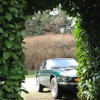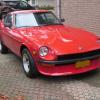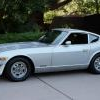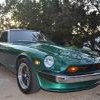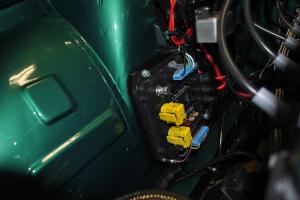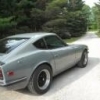When I completed the restore of my car, I spent a lot of time removing brackets, clips, and other miscellaneous parts within the engine bay in order to give it a cleaner and better organized look. Actually, this was my son's idea, so I can't take credit for it, but it really did clean up the look of the engine bay nicely.
However, as I was contemplating all of the upgrades for the electrical system, I realized I was going to need a slew of new relays for headlights, cooling fans, etc and I just didn't like the idea of cluttering up the engine bay that I just got done cleaning up. On top of that relays are mechanical in nature and as such can fail over time, so I really wanted something a little more elegant as well as reliable.
Well I did find something and I'm probably the only Z person in our universe who has done this. I purchased a system from a company called Isis Power. They produce a product that is essentially an integrated power control system that uses solid state FET transistors to switch power to the desired loads. Zero relays and totally programmable. They are apparently pretty popular with the hot rod crowd as well as folks doing a lot of ground up restorations. In addition, they also provide a remote key fob and receiver that allows you to completely disable the ignition of the car (assuming you have your ignition wired into the Isis system) making it difficult if not impossible to jump start the car. I will add that it is also expensive, especially as compared to the relay alternative, so I thought long and hard before deciding to do this.
Well it was an adventure to get it all working and took quite some time, but in the end I have an extremely reliable modern day system that not only provides power control but a slew of other features only available in more modern cars.
Having said that, it really took some time for me to fully understand the way in which the system operates and all of the capabilities it has, but the fundamental premise of operation is that the system needs to see a switch closure to ground which serves as a signal to activate a specific load attached to the system. As a result of that, I had to do a lot of rewiring as pretty much all of the switched circuits in our Z, switch power, not ground.
The system comes as 2 units, a Master Cell and a Power Cell. The master cell is the intelligence of the system and is the termination point for all of the switched circuits that you want to control. The power cell actually provides the power to the desired load. The master cell "talks" to the power cell over a 5 wire CAN (car area network) bus and will basically tell it when to turn on / off any specific load.
I mounted the master cell on the passenger side kick panel where my old transistor ignition module used to be. The power cell is mounted in the engine bay on the passenger side tucked away down by the frame rail.
I also decided to only use the Isis system for the highest power devices in the car or ones that I wanted better control of. So the system controls headlights (including Hi / Low beam), ignition, fuel pump, wipers, cooling fans, stereo, stereo amp and subwoofers. The other circuits remain as they were although my original fuse box is highly depopulated now.
For the install, I also added circuits gradually so I could better understand the way in which the system operated and ensure that each circuit behaved as expected.
I've included a few pictures of the install. I've also left out a lot of details on the ins and outs of the install but happy to answer any questions.
 Subscriber
Subscriber 2Points11,136Posts
2Points11,136Posts





